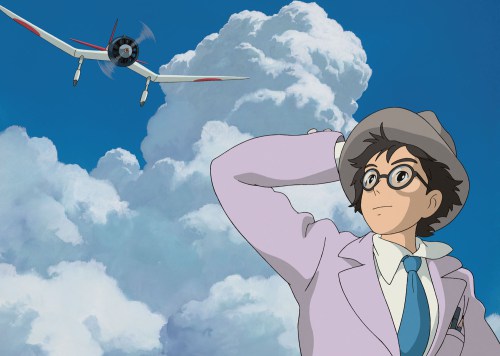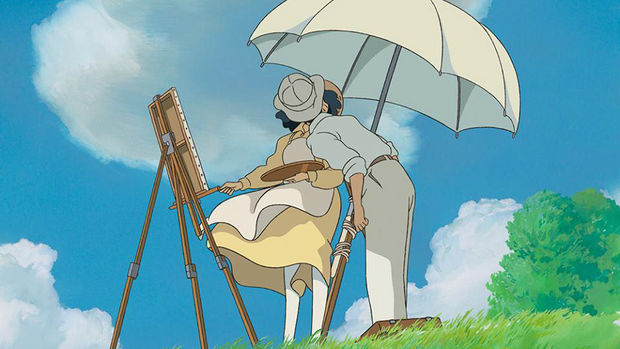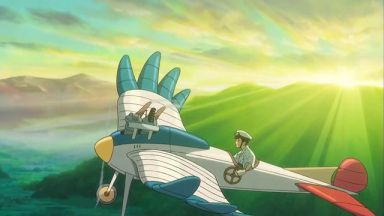
The Wind Rises, nominated for Best Animated Feature this year, is purportedly Hayao Miyazaki’s last film and this historical romance is as satisfying as any feature film in the adult marketplace. The celebrated Japanese director buries a nugget of wisdom in the center of his intriguing tale about a young boy who dreams of flying and grows up to be Japan’s most important aeronautical engineer. In a conceit that only a master filmmaker can pull off, Jiro and his hero Caproni, an Italian designer of airplanes, meet in a dreamy netherworld where they share their vision of airplanes and flying. Caproni tells Jiro that artists only have 10 innovative years, urging Jiro to make the most of his time. Since we have been fortunate to have nearly forty years of remarkable animation from Miyazaki, this advice is an oddity — but perhaps provides insight into how the animator looks views the course of his own creativity. Here is a cool timeline of his incredible career.
The movie portrays several events in Japanese history with startling accuracy, including the Great Kanto Earthquake, a Depression, and the military’s ramp up for war. These scenes are vast and complex in scale yet contain such emotional veracity that they are worth the price of admission – and viewers should pinch themselves and remember that each scene was hand drawn. Jiro Horikoshi, the inspiration for the film’s hero, designed the Japanese fighter plane, the Zero which bombed Pearl Harbor and strafed Allied planes throughout WW2, lending the film a potent political undertone that has been debated in the Japanese press (where conservatives have been critical of Miyazaki’s pacifist stance). It will be interesting to see how the film is received in the US – it is not really for children at all, and ends on a somber note with a wistful message about the men who dream of flight and the nations that employ these magical machines for deadly use.
And yet, to watch the film is to experience frame after frame of incredibly elegance and beauty – both in the choice of how scenes are framed and colored, and in the flights of fancy created by the animators. Most memorably, the film opens with Jiro climbing up to the roof of his childhood home and taking off from a plane conveniently hitched to the roof. As he flies over the spectacular rural landscape, we come to understand we are in the boy’s dream. Other such lyrical scenes take place in real life when Jiro falls in love with a young woman as they toss paper airplanes to one another at a mountaintop hotel.

Ultimately, the story focuses on another passion – that of Jiro for his work. The dreamer’s dedication to the creative process is portrayed as apolitical and what’s interesting about the film is how Miyazaki manages to inject beauty and emotion into a film that tracks so many sad facts of history. Jiro is sensitive to the poverty and suffering of the Japanese people, he falls in love with a girl during the 1923 Earthquake, and although they marry later, she suffers from tuberculosis. The topics are adult, starting with the character’s driving professional ambition to the politics of war and romantic tragedy of the heroine’s illness and death.
And yet, what I will remember from the film is a blazingly beautiful contrail, the trace of a master’s last flight.
N.B.: Jiro and his fellow designers smoke constantly throughout the film.

